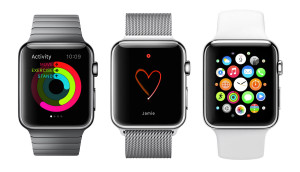 Who doesn’t like some good old-fashioned geekery? Displaymate goes unbelievably deep on the subject of the screen on the Apple Watch, and comes up with some fascinating details that will have an impact on any other smart watch maker:
Who doesn’t like some good old-fashioned geekery? Displaymate goes unbelievably deep on the subject of the screen on the Apple Watch, and comes up with some fascinating details that will have an impact on any other smart watch maker:
Displaymate found that the watch’s screen is OLED, probably from LG, and is Apple’s first OLED screen. Power management is rigorous, sometimes compromising color display quality. (If Apple could have spared more power, it would have had more flexibility in the way colors are shown.)
But more interesting are the compromises and difficulties that Apple faced with the watches’ crystal. The Sport watch uses the same kind of “Ion-X” glass as an iPhone 6 — similar to Corning’s Gorilla Glass 3. The Watch and Watch Edition use sapphire crystal, which is extremely rugged and scratch resistant. (Here’s what Consumer Reports found in its testing.)
The thing is, the current generation of sapphire transmits less light than Ion-X glass, presenting Apple with the challenge — which Displaymate says it met — of making the displays look identical despite very different reflective profiles of the crystals covering them.
The only other smart watch to use an OLED display, Displaymate said, is the Samsung Gear 2, which uses Gorilla Glass as a crystal. Because Samsung doesn’t need to worry about consistency of appearance with an otherwise-similar product, that allows users of the Gear 2 to hype colors and brightness on its screen, making the screen look better without actually being better.
If you want to get way into the weeds, Displaymate says that it should be possible for manufacturers to save battery power by playing with an OLED display’s color temperature. By going from the standard 6,500K to a bluish 7,200K, builders could turn down the display’s Blue driver (which is the least power efficient on an OLED) and save about 10 percent on power drain.
It’s a long and technical read, but highly instructive about the compromises hardware builders have to make.